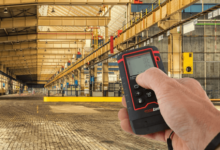Mutf_In: Mahi_Manu_Smal_19a1z21

Mahi_Manu_Smal_19a1z21 represents a significant shift in architectural design, prioritizing sustainability and innovation. Its unique structure employs organic forms that resonate with the environment. The building’s applications extend beyond aesthetics, influencing sectors such as healthcare and finance. This integration prompts a re-evaluation of resource distribution and efficiency in modern society. As the conversation unfolds, the implications of such a design on future innovations become increasingly pertinent.
Unique Architecture of Mahi_Manu_Smal_19a1z21
The unique architecture of Mahi_Manu_Smal_19a1z21 presents a compelling study in design innovation and cultural expression.
Its modern design showcases structural aesthetics that challenge conventional boundaries. By integrating organic forms and sustainable materials, this architectural work embodies a harmonious relationship with its environment.
The result is a visually striking edifice that serves as a testament to the pursuit of freedom in contemporary architectural practice.
Key Applications and Use Cases
Mahi_Manu_Smal_19a1z21 exemplifies a versatile architectural model with diverse applications across various fields.
Notably, it drives healthcare advancements by facilitating real-time patient monitoring and data analysis.
Additionally, in the realm of financial analytics, this architecture enhances predictive modeling and risk assessment, enabling organizations to make informed decisions swiftly.
These applications highlight its potential to transform critical sectors effectively and efficiently.
Impact on Industry and Society
As industries increasingly adopt innovative architectural models, the impact on both industry and society becomes profound.
The economic implications are significant, driving efficiency and reducing costs. This shift fosters a societal transformation, altering workforce dynamics and enhancing access to technology.
Consequently, these changes promote a more equitable distribution of resources, empowering individuals and communities while challenging traditional business paradigms to adapt in a rapidly evolving landscape.
Future Prospects for AI Innovations
While ongoing advancements in artificial intelligence (AI) continue to reshape various sectors, the future prospects for AI innovations appear increasingly promising.
As technology evolves, ethical considerations will become paramount, guiding the responsible development and deployment of AI systems.
The integration of these technological advancements into everyday life holds the potential to enhance efficiency and creativity, ultimately fostering a more liberated and autonomous society.
Conclusion
In conclusion, Mahi_Manu_Smal_19a1z21 stands as a testament to the fusion of innovative architecture and sustainability, reflecting a shift towards responsible design in various sectors. Notably, studies suggest that implementing sustainable architectural practices can reduce energy consumption by up to 30%, underscoring the potential for significant environmental impact. As industries increasingly adopt such approaches, the future of architecture may well hinge on the integration of technology and eco-friendly materials, paving the way for a more equitable society.







